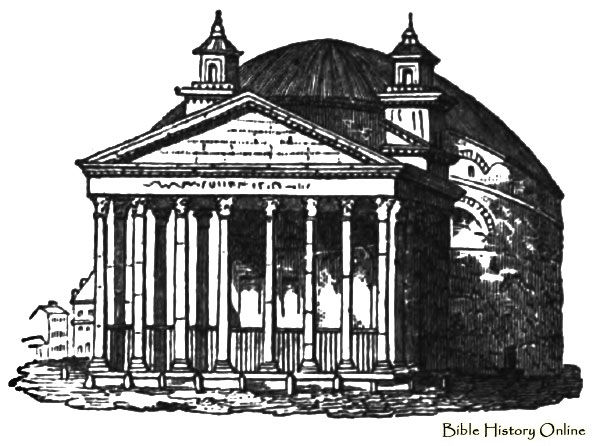
The Pantheon, or the temple of all the gods. It is the best preserved ancient building in Rome and is universally admired for its fine dome and beautiful columns.
Source:

The Pantheon, or the temple of all the gods. It is the best preserved ancient building in Rome and is universally admired for its fine dome and beautiful columns.
Source:
The ancient Greeks made remarkable achievements in art and architecture, leaving a lasting impact on Western civilization. Some of their major accomplishments include: Sculpture: Greek sculpture reached unparalleled heights, with an emphasis on ideal...
The name of Jesus, in its original language, was written in Hebrew as יֵשׁוּעַ (Yeshua) or יְהוֹשֻׁעַ (Yehoshua). In the New Testament, the name appears in Greek as Ἰησοῦς (Iēsous). The specific form used in the Bible depen...
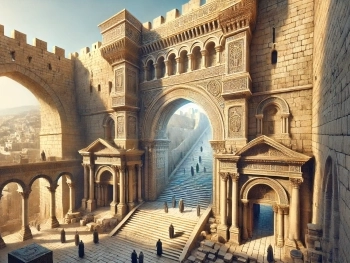
The Huldah Gates, located on the southern wall of the Temple Mount in Jerusalem, are a significant archaeological and historical feature. These gates served as entrances and exits for worshippers ascending to the Temple during the Second Temple perio...
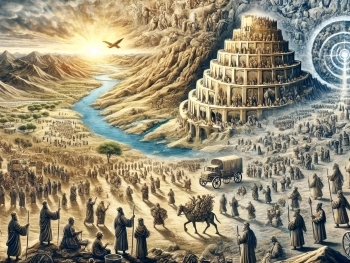
The question of the origins of nations and peoples has fascinated humanity for centuries. From a biblical perspective, the origins of all nations can be traced back to the descendants of Noah’s three sons—Shem, Ham, and Japheth—following the gr...
Ancient Rome is often associated with grand architecture, legendary emperors, and mighty legions. However, the daily life of women in ancient Rome remains an intriguing and less-explored aspect of this civilization. While gender roles and expectation...
Ancient Chinese society and culture exhibited several notable differences from Western civilizations. Here are some key distinctions: Philosophical Traditions: While Western civilizations developed philosophical systems such as Greek philosophy and l...
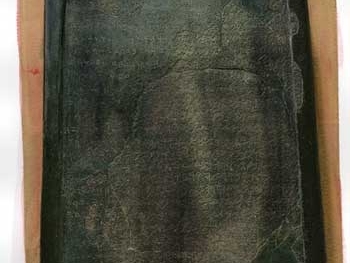
The Moabite Stone was discovered in 1868 about 20 miles east of the Dead Sea at Moab. It was a black and blue basalt stone dating back to around 830 BC, discovered by a German Missionary named F.A. Klein. It contains an inscription that reads: “I M...
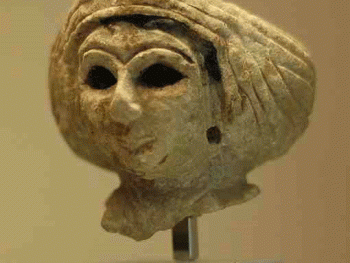
The Bible mentions Delilah as a woman of the valley of Sorek who Samson loved very much. The Philistines paid her a large sum of money to deceive Samson and entice him into revealing the secret of his great strength. After several attempts she finall...

The Passover Papyrus is a letter from among the elephantine papyri that dates back to the time of Darius II, in 419 BC. In 1907 archaeologists discovered in Aswan papyrus fragments of a letter that bears the royal authority of the Persian Empire (not...
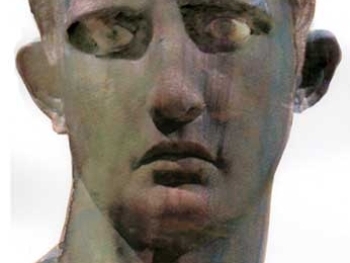
This bust was discovered by archaeologists at Meroe (Modern Sudan) and is currently in the British Museum. It depicts the face of the Roman Emperor Augustus who ordered the census just before the birth of Jesus. This brought the parents of Jesus (Jos...
The ancient Persian Empire, known for its grandeur and administrative prowess, stands as a testament to the organizational genius of its rulers. From the Achaemenid to the Sassanian dynasties, the Persians created and administered a vast empire that ...

Augustus was born with the name Gaius Octavian on September 23, 63 B.C. His parents were C. Octavius and Atia, a niece of Julius Caesar, by his sister Julia. Source: Augustus Caesar...
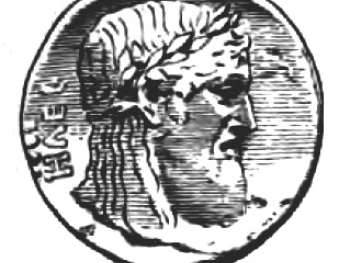
In Christianity, Jesus is the One true God who came to earth clothed in human flesh. In Greek and Roman mythology Zeus (Jupiter) was a celestial deity, and one of many gods. Zeus was the chief of the gods of Olympus, and he was the son of Saturn and ...
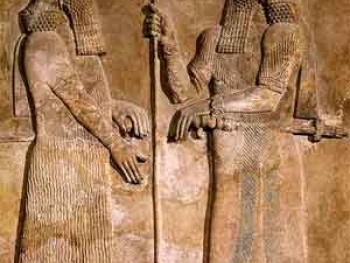
Scholars recognize that the primary sources for the study of ancient Assyria are the Assyrian Annals, the Assyrian Chronicles and Eponym Canon, The Assyrian King List, Assyrian Sculptures, and the Bible. The Assyrian Annals. The scribes of the chief ...
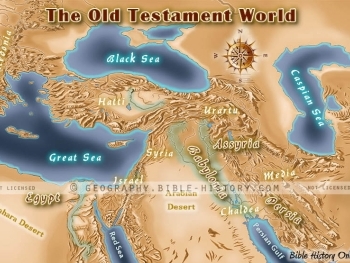
The Black Sea was known in ancient times as the Euxine and in the Roman Empire as Pontus Euxinus, and many ships sailed along its borders. The Black Sea was not mentioned in the Bible, although it was a northern boundary in the Roman Empire and the N...
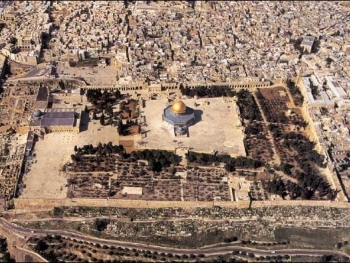
The etymology of the name Jerusalem is not certain; it is apparently of Semitic origin. An Egyptian notice from the third quarter of the nineteenth century B.C. mentions Urusalimum. The Assyrians called it Ursalimmu. Modern scholars take these names ...
There are five primary sources for the study of the Second Temple in Jerusalem, the Temple of Herod. They are: The BibleThe Books of MaccabeesJosephus*The Dead Sea ScrollsThe Mishna** *War book 5, chapter 5; Antiquities book 15 chapter 11**tractates ...
The Wilderness of Judea, mentioned in the Bible, refers to a geographical region located east of Jerusalem and extending toward the Dead Sea. It is characterized by its rugged terrain, barren landscapes, and limited vegetation, making it a challengin...
Welcome to Free Bible: Unearthing the Past, Illuminating the Present! Step into a world where ancient history and biblical narratives intertwine, inviting you to explore the rich tapestry of human civilization.
Discover the captivating stories of forgotten empires, delve into the customs and cultures of our ancestors, and witness the remarkable findings unearthed by dedicated archaeologists.
Immerse yourself in a treasure trove of knowledge, where the past comes alive and illuminates our understanding of the present.
Join us on this extraordinary journey through time, where curiosity is rewarded and ancient mysteries await your exploration.




